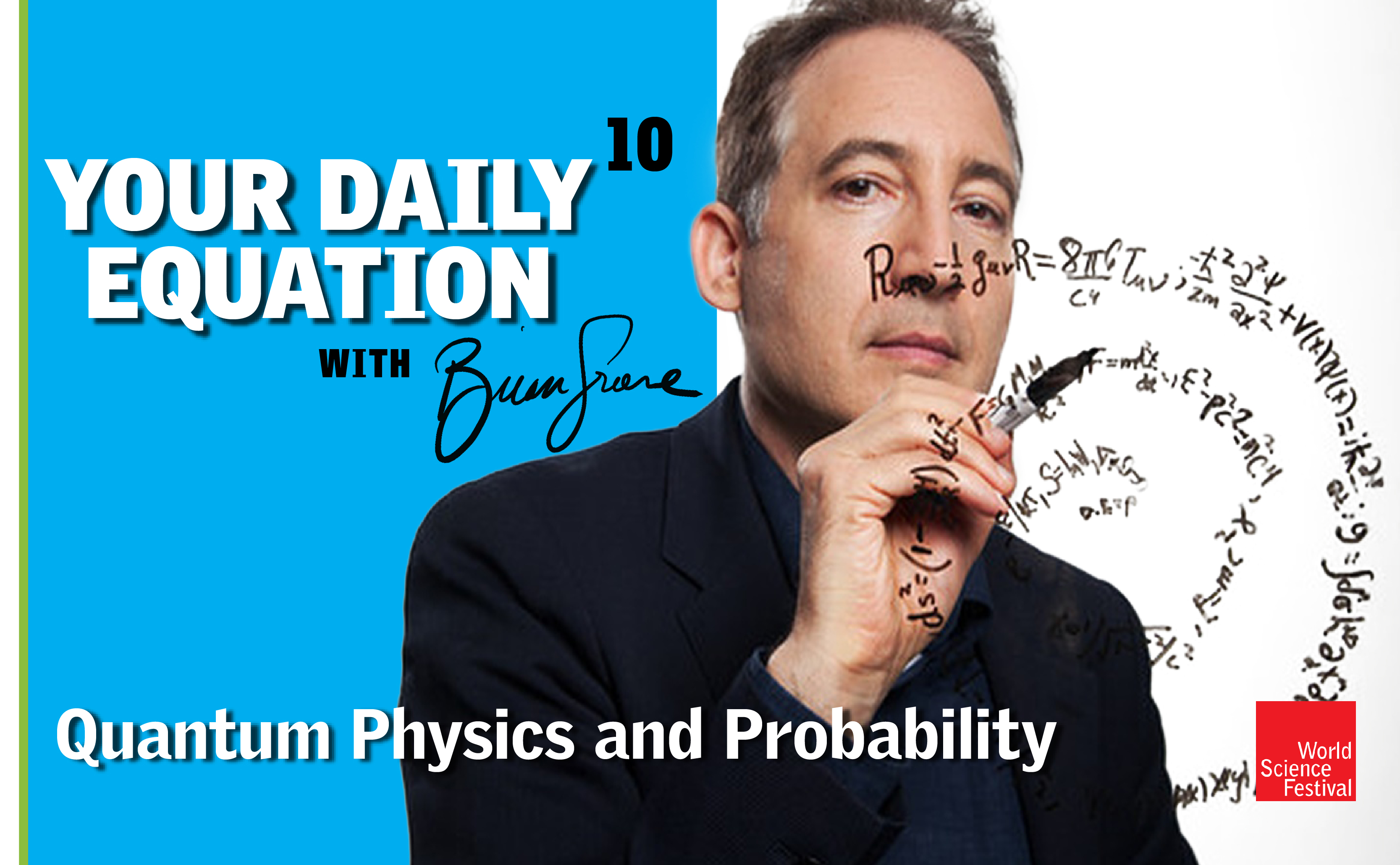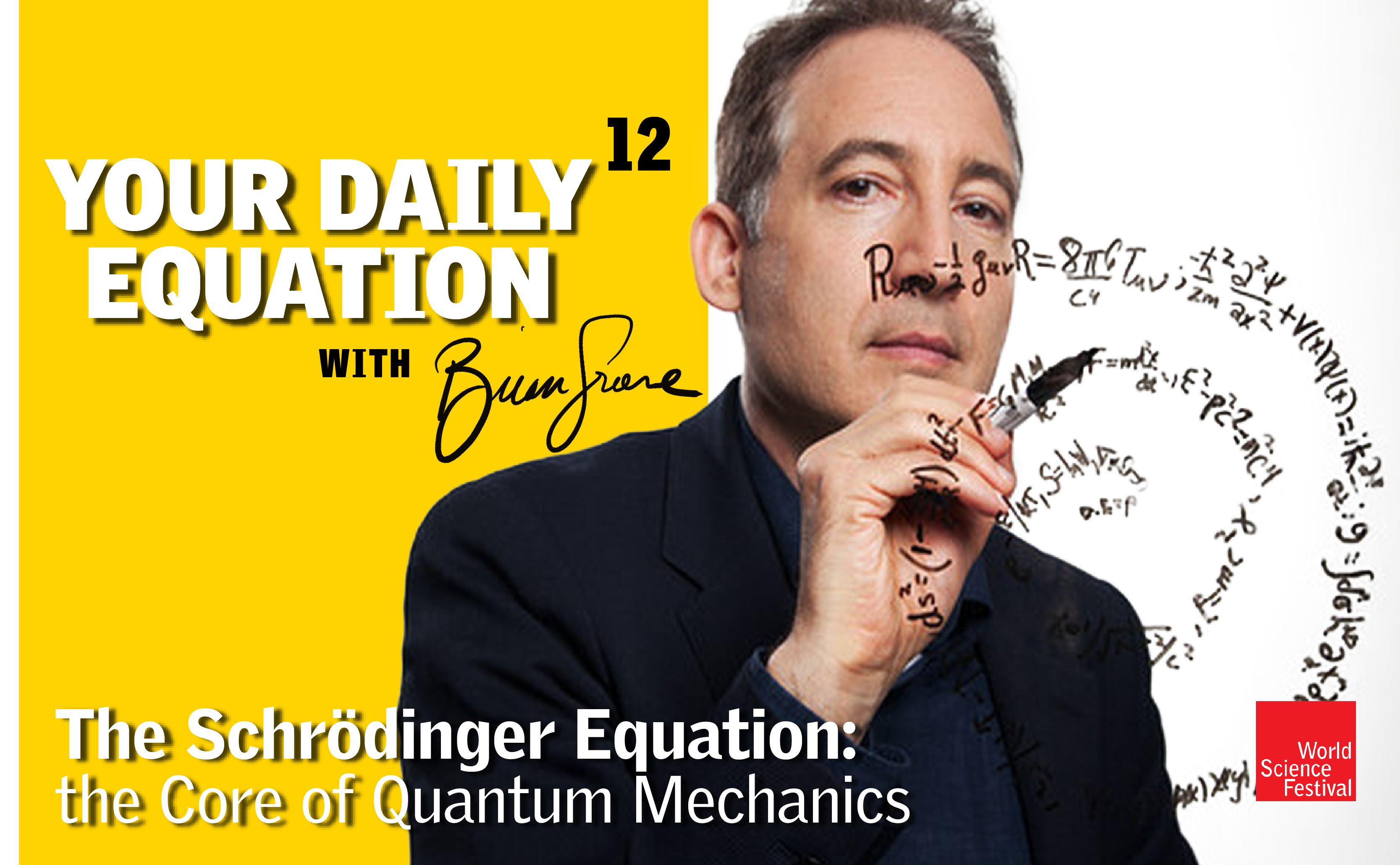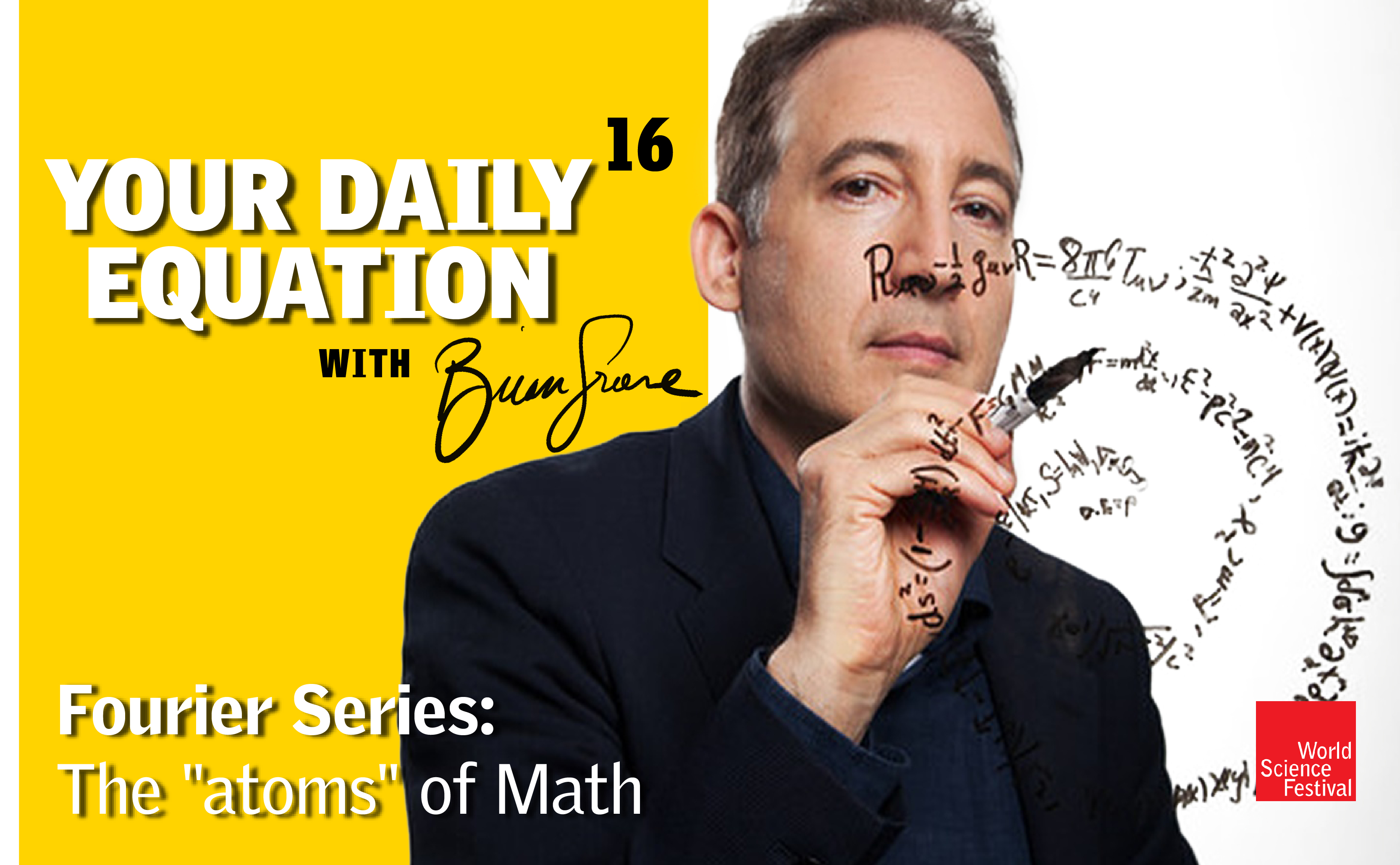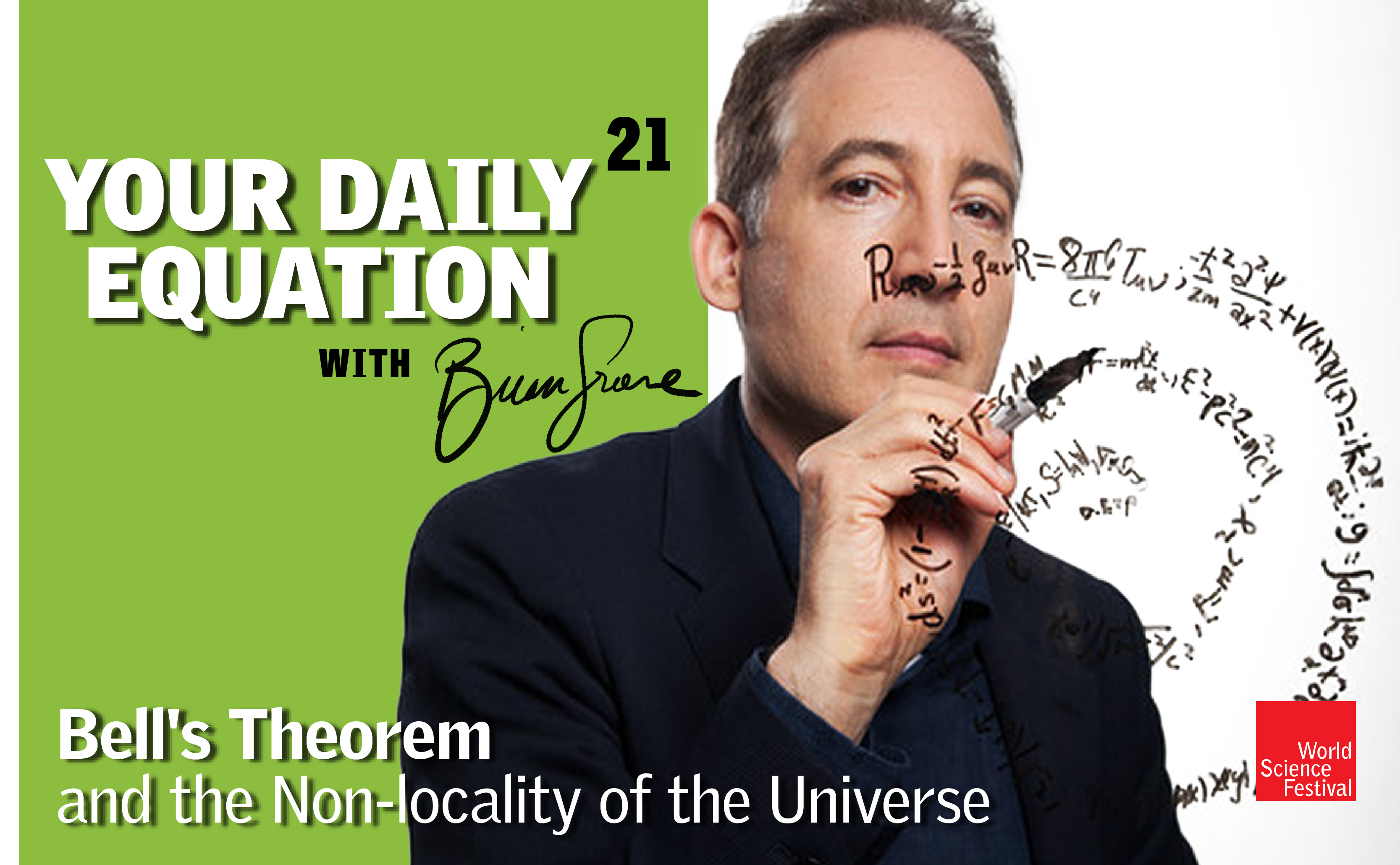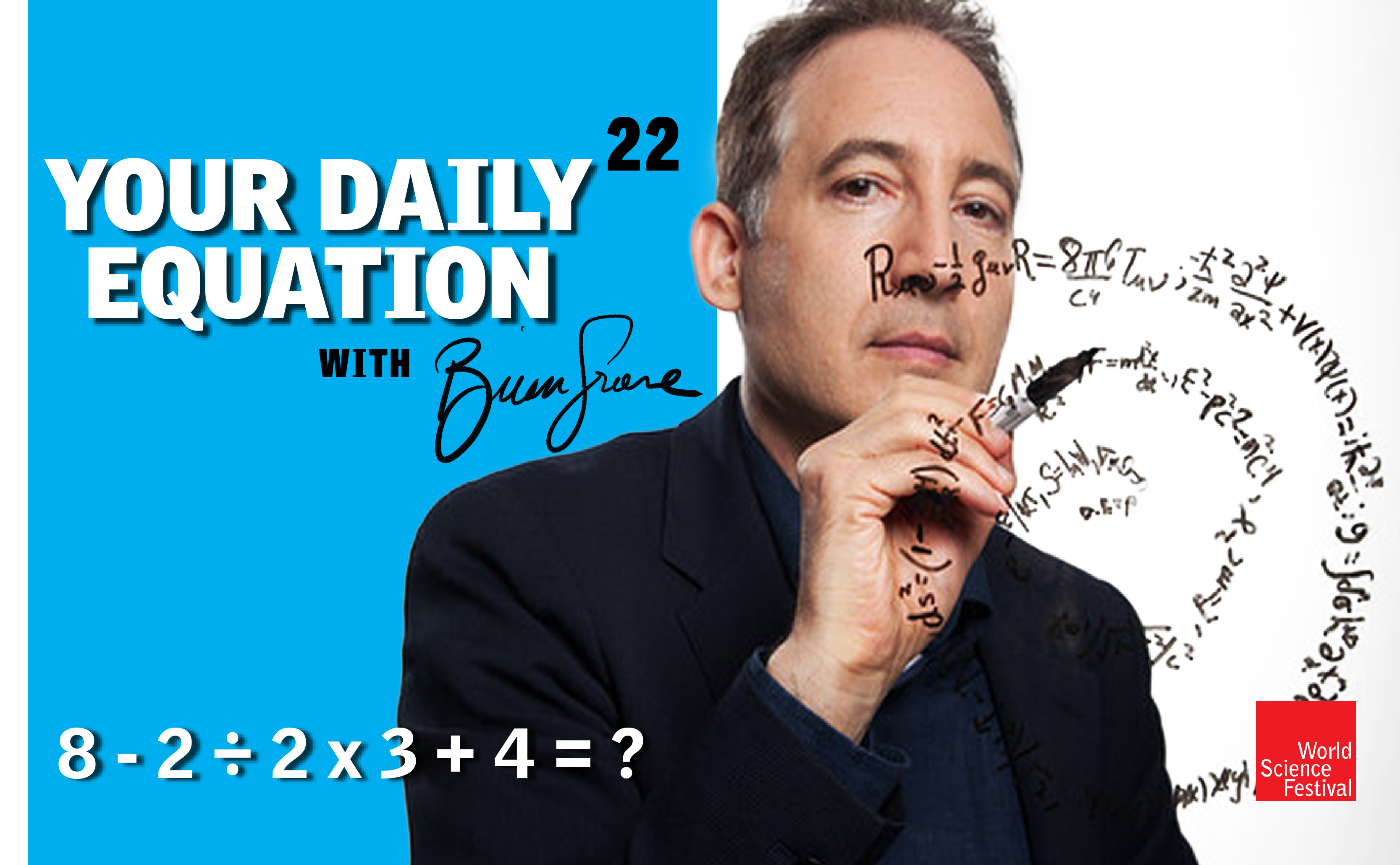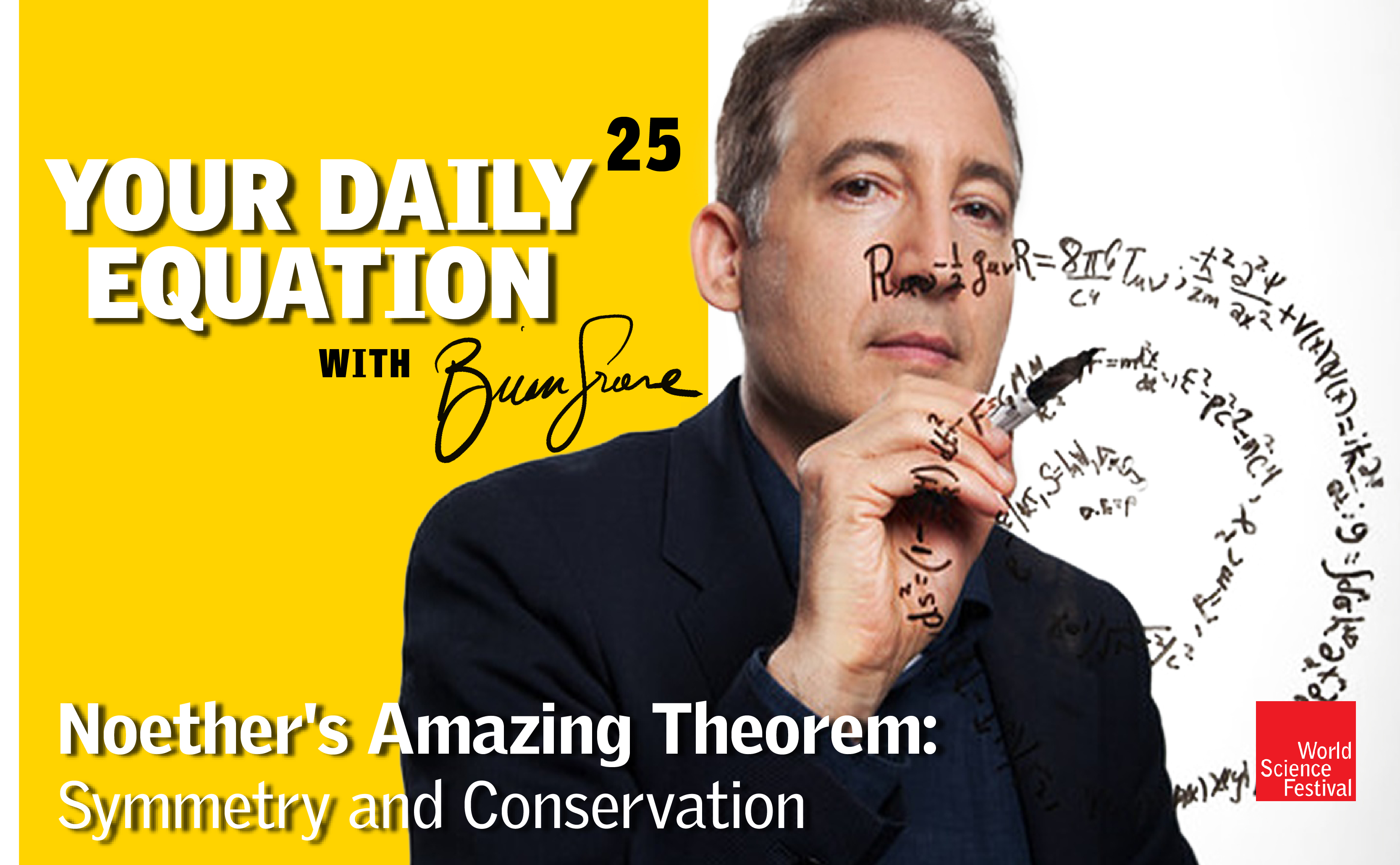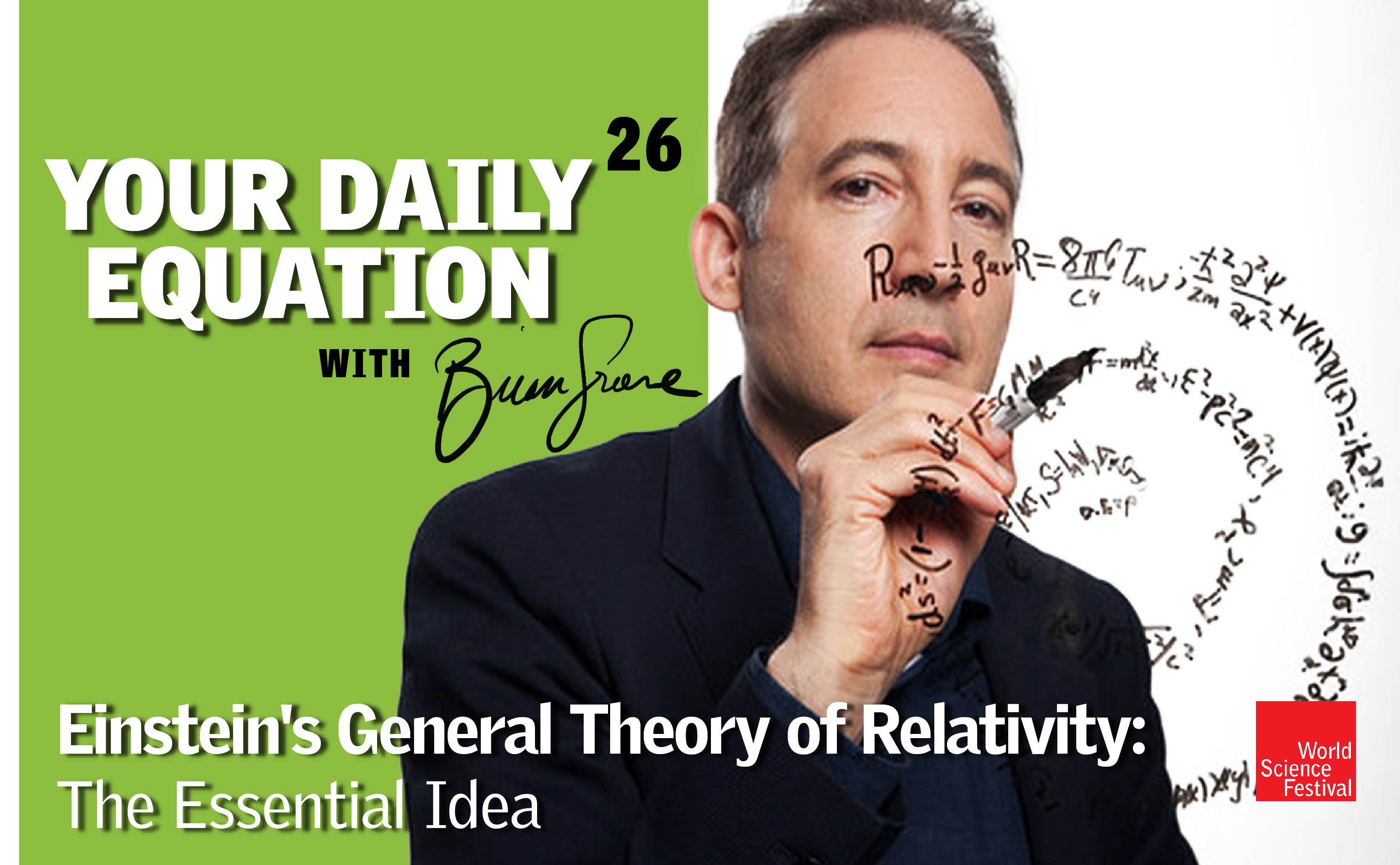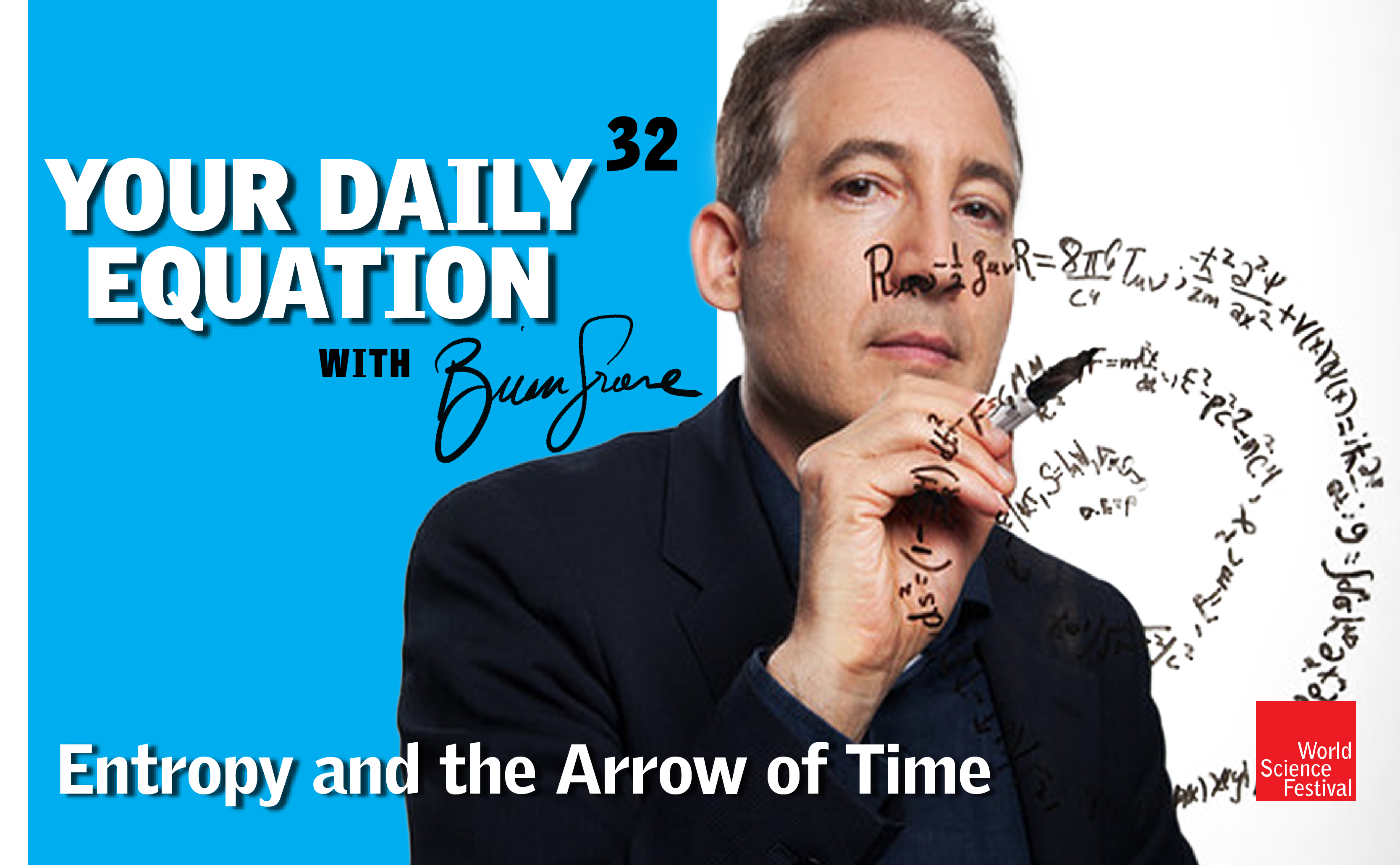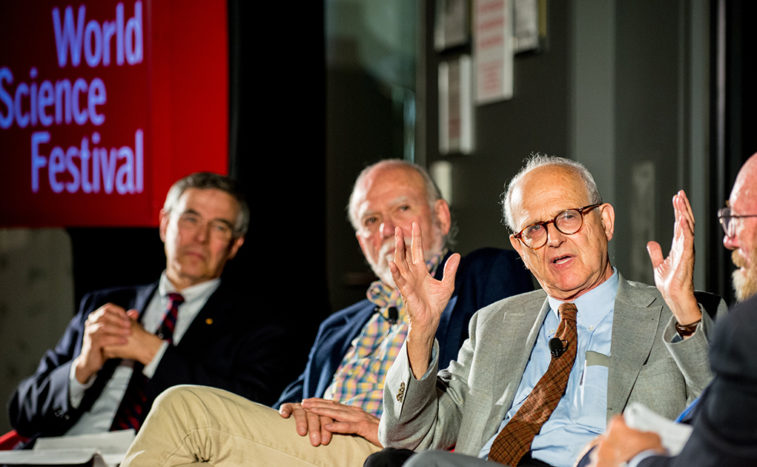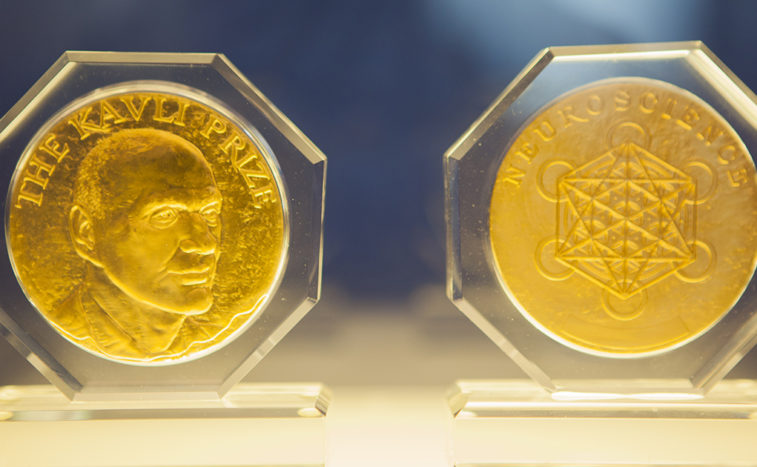118,583 views | 01:07:30
Join us for #YourDailyEquation with Brian Greene. Every Mon - Fri at 3pm EDT, Brian Greene will offer brief and breezy discussions of pivotal equations. Even if your math is a bit rusty, tune in for accessible and exciting stories of nature and numbers that will allow you to see the universe in a new way. Episode 25 #YourDailyEquation: In 1918, the phenomenal German mathematician Emmy Noether discovered a deep link between symmetries and conserved quantities, which has proven to be one of the most influential mathematical results in the development of physical laws. Join Brian Greene for an explanation of Noether's insight and the mathematical argument--in the simplest case--establishing that it is true.Learn More
Speaker 1:
Hey, everyone. Welcome to this next episode of Your Daily Equation. And today I’m going to focus attention on a very famous theorem proved by the mathematician Emmy Noether, which has really had profound impact in physics ever since she established this theorem back in 1918. Here is the hero of today’s episode. Emmy Noether, German mathematician, born in the 1880s, came to prominence in the early part of the 20th century. Widely recognized as this brilliant mathematician. When the Nazis came to power in Germany, she left Germany, emigrated to the United States, joined the faculty at Bryn Mawr College. I think I pronounced that right, Bryn Mawr, Bryn Mawr College. And she unfortunately died at a very early age in her 50s from cancer. Tragically left us far too soon, but she proved and contributed a great many theorems to our understanding in mathematics in the areas of abstract algebra. I’ve studied her work outside of physics in Galois theory and mathematics.
But perhaps the most famous theorem, at least to a physicist, is what is known as Noether’s theorem, as if there’s only one. There are many, but it’s a theorem that gives us insight into the connection between conservation laws and symmetry, as I’ll now discuss. Here’s a little excerpt from the paper itself. As I mentioned, 1918, as you can see, it gets kind of heavy after a while. But the essence of Noether’s result can really be distilled into a fairly simple formulation, which of course can be generalized. But as you know, I like to pare things down in this series to the essence of the mathematical idea, because the generalizations can look far more complicated than the initial incarnation, that for instance, I show you, but those details, while important for the general application of many of these ideas are not so important to get the gist, the essence of what the contribution is all about.
So let’s get into then the subject here. Let me swap over to my iPad. Good. So we’re talking about Noether’s theorem, and I know that I am pronouncing her name a little bit wrong, but it’s kind of the best that I can do. Maybe it’s Noether. Noether’s theorem, something like that, but it’s going to sound kind of bizarre if I try to do that. So let me just use the standard American pronunciation of Noether’s theorem. And the idea… Is this up? Yeah, it is up on the screen. Okay. So as I mentioned, it’s all about the relationship between what are known as conservation laws and symmetries. So let me spend just a moment on conservation laws first, then I’ll get to symmetries and then I’ll show her beautiful theorem that connects the two.
All right. So what is a conservation law. A conservation law is any law that tells us that a quantity doesn’t change over time. The most familiar conservation law, I think, that we’re all familiar with is this notion of conservation of energy. The energy that you begin with is equal to the energy that you end with if you add up all sources of energy. And these conservation laws are incredibly powerful. Let me just give you one simple example that no doubt you’ve encountered various versions of this in your own studies, but it’s kind of good to see it spelled out once, especially in this context. So let’s imagine that we have some block that’s on a hill, and maybe it’s a really complicated looking hill, and the block starts over here and it slides down this hill. Imagine there’s no friction, so things are really nice. And imagine that you are challenged with working out what the speed of the block is at the bottom of the hill.
Now, of course, one way of going about this, and the most straightforward, naively, is you simply start with Newton’s laws. You’ve got F equals ma equals md2x dt squared. And you know the various forces that are acting on this block. You’ve got the force of gravity. If you got the normal force, that’s the force exerted by the slide along which this block is moving. So you could try to spell these out in detail with the vector components, plug them into the differential equation above. From that, if you sum that differential equation, you could get the position as a function of the time t. Given that, you could take the derivative and you evaluate it at the time when the block gets to this location. So all very doable, but a little bit involved.
A far simpler way to get at the answer is to use conservation of energy. What do I mean by that in this particular case? Well, at the beginning of the block’s journey, it is, say, at rest and therefore all of the initial energy that it starts with comes from gravitational potential energy, which we know, and I’ll just write down here is the mass of the block, g the acceleration due to gravity times h, imagine that the height of the block above the ground surface is h. Now by conservation of energy, this must also be equal to the energy that the block has at the end of its journey when it has reached this location over here. The color of the block won’t change, but you know what I mean. Now at that location, the block doesn’t have any gravitational potential because h is equal to zero, but it does have kinetic energy, which is one half m times the speed squared.
And then we therefore have mgh equals one half mv squared, which means we can solve for v, multiply two, the m’s go away, and v therefore is equal to the square root of two gh. And there we have the answer in one line of work. No differential equation to solve. No f equals ma. So it’s a real powerful shortcut to getting the answer to the problem that we were looking at. So conservation laws, the message of this little example really brings home, are quite powerful. Let me give you one other example, just for the fun of it. Let’s look at conservation of momentum. So let’s imagine a circumstance where momentum is conserved and the circumstances under which it is conserved we are going to come to quite shortly, but I’ll give an example where it is conserved.
Imagine I have say a star in space, and it goes supernova. Imagine that this star just explodes. I can’t really… Not a good artist, but imagine that all these little pieces of the star get blown outward. This one this way, this one that way. Each one has its own little velocity vector. I’ll just draw a few of them so you can get a feel for the issue I’m about to raise, which is what if I were to ask you to do what appears to be our gargantuan calculation? What if I said to you, what is the total final momentum of all those little particles that the star blasts outward into space? I want you to sum over all of those little particles, the momentum of the i’th particle that is flung outward by the star. Well, how do you do that? Well you could try to work out the detailed force that blew the star apart, and you could try to figure out how that force exerted and resulted in the motion of each little tiny constituent that gets blown out. You could try to do that. But man, that would be tough.
But using conservation of momentum, there is a much simpler way to go about it. The total momentum final must be equal to the total momentum initial. And what was the total momentum initial? Well, the star was just kind of sitting there not doing anything. Just imagine that the star, to be a little more precise, is just a solid rock with no motion whatsoever, just to keep our selves simple in this description. And that initial momentum was equal to zero overall. The thing was not moving at all. And therefore the answer to your question. Well, not your question, my question that I asked you, that sum must add up to zero. And we got that without having to do any differential equations. No f equals ma. Nothing complicated at all.
So again, it’s just to show that conservation laws are really powerful, they’re really important. Okay, so then that takes us to what Emmy Noether, the profound contribution that she gave us in 1918. And that profound contribution, as I mentioned, is this connection between symmetry on the one hand, and this important idea that we were just talking of conservation laws. So I’ve said already a few words about conservation laws. Let me say a few words, therefore, about symmetry. And there are two important classes of symmetry that are good to bear in mind. There are so called continuous symmetries, and there are also what are known as discrete symmetries. So let me just give you an example of each, just to make sure that we are all on exactly the same page. And I should have some example. I should have set this up. What can I use? Well, hang on a second. Sorry. One bit, just grab this guy over here.
All right. So I do have a ping pong ball here, and it does have some writing on it, but ignore the writing. Imagine this is just a perfectly orange ping pong ball with no writing on it whatsoever. And if that were the case, then as I rotate it, regardless of how I rotate it, it would look the same to you. Again, forget the writing. So the writing does break the symmetry. But if there was no writing at all, however I rotate this, I’m trying to keep the writing on my side, any rotation leaves it looking the same. And by that, we mean that the ping pong ball has a symmetry. A symmetry is a transformation of an object or an equation or the ingredients that make up a physical system, it’s a transformation of the system, which leaves the system looking the same, or we often say it leaves the system invariant.
So this is a continuous symmetry because I can rotate it at arbitrary angles. However little, however big, I have a continuum of symmetry transformations that I can apply to the ping pong ball that leave it looking the same. For a discrete symmetry, well, any symmetric looking object can do. Let me use this mug that people comment on my dirty muddy water. This is Earl Gray with soy milk. Unfortunately it has tea leaves in it. I do not want to turn this on its side without drinking it. So excuse me. For science, for pedagogy, let me just drink all the junk that’s in here.
I do not like to drink tea leaves, but whatever. Okay, so now this is more or less clean. Sorry if you found that a little gross. So this is more or less clean now, and you’ll note that if I look at the opening, the top of this mug, I have a circle here. Just look at that circle. As I rotate this mug, as I rotate that circle, the circle looks the same. The rest of the mug does not look the same under that continuous transformation, of course, because… I mean, forget about the handle, but the rest of the mug, it has a discrete symmetry. By that, I mean, if I rotate it by 90 degrees, it looks the same. Forget the handle. If I rotate it by 90, it all looks the same because of the discrete symmetry respected by the bulk, the body of the mug.
So this is an interesting example where I have both continuous symmetry for part of it, and I have a discrete 90 degree fourfold symmetry for the rest of the mug. You can do this with a book. Why not plug my own book? Forget about the title of the book, it’s the shape I’m after. If I wrote today this way it doesn’t look the same, the shape, but if I rotate it this way it does. So I have to rotate it by 180 degrees for the shape to return to the form that I began with. Those are discrete transformations. Oops. Just knocked some stuff over there. A more pretty example, let me bring that up on the screen here. So here’s a prettier example, that is the canonical one that people often use. It’s a snowflake. You see the snowflake here has a six-fold symmetry. So if you rotate it by 60 degrees, each of those points moves over to the location occupied by the previous point, and therefore it looks the same under that discrete sixfold transformation.
So you have these discrete symmetries and you have continuous symmetries. And what Noether found is that if you… Let me go back over here. If you use continuous symmetry. So everything we’re going to talk about now is focusing on the continuous symmetry case, let me choose a different color. So these continuous symmetries are related to conservation laws. And it’s that connection that I now want to spell out for you, and it’s actually in the pared down version that I’m going to focus my attention on. It’s actually a pretty straightforward argument. Again, as I showed you, Noether’s paper does get pretty involved. You can take these ideas to a great level of generalization abstraction, but to get the gist of it, you don’t really need all of that.
So what am I going to do? I’m going to work in the context of the Lagrangian mechanics. And if you don’t know what that is, then you kind of have to just kind of follow along at a 30,000 foot level. But if you want to have a little background on that, you can look at the episode that we had earlier on the least action principle where I described the basic idea of Lagrangian mechanics. I’m not going to go all the way back to review that here. Let me just… Wow, that is a serious M that I have there. Can I just erase this little part of it? Yeah. It’s going to get in my way. Let me just do that like that.
So I’m going to start with a Lagrangian, which you will recall either from your own studies or from our previous episode, say depends on coordinates. They’re derivative, so a dot means the dx… I could also have a t in here, but I’m going to pare it back just to keep things simple and imagine that Lagrangian is a function, say, of x and x dot, and then the momentum is defined to be the dl dx dot. And what we showed in an earlier episode, and again, it’s standard, so many of you have encountered it elsewhere, is that the equation of motion that the coordinate x will follow, will satisfy as a function of t, can be gotten by looking at d by dt, dl, dx dot, and setting that equal to dl dx. In essence, these are, or I could say this is, in this one dimensional case that I’m writing down. This is Newton’s equation. This is just Newton’s law. This is f equals ma. Dl dx is basically f and d by dt of dlx dot is d by dt of P, which for constant mass is just mass times second derivative of X with respect to time, which is ma.
So it’s a fancy way of writing f equals ma, and now what we’re going to do is we are going to imagine that there is a transformation, a continuous transformation, in which we are going to imagine taking x and replacing it by some transformed value of x, which I’m going to call x of lambda. So lambda will be our transformation parameter. So for instance, when I was rotating the ping pong ball, lambda could be the angle through which I am rotating this ball, say, in three dimensional space. So I’m going to take x to be x of lambda. And I am going to imagine that this is a symmetry of my Lagrangian, which means that when I plug x of lambda in place of x in my Lagrangian, imagine I substitute x of lambda for x, the Lagrangian won’t change at all, which means if I now frame this in just the language of calculus, it means if I look at d by d lambda of l of x of lambda, x dot of lambda, that that derivative will be equal to zero. It doesn’t change at all as a function of lambda. It doesn’t change at all as a function of this continuous symmetry.
So with that as a starting point, a Lagrangian together with a continuous symmetry, what Noether is able to prove is that there is a quantity, and I’m going to give that quantity a name. I don’t know, maybe pink is fun. I call it I for invariant, or you call it C for conserved. It doesn’t matter. It’s just a definition of a letter. I’m going to define this invariant quantity to be dl dx dot, multiplied by the derivative of x with respect to lambda. And the claim is that this quantity does not change in time. It is a conserved quantity. So mathematically, then, what we need to prove to establish this is that if I look at dI dt, the claim is, Noether’s claim is that this will be identically equal to zero. It will not change in time. So that’s the connection between a symmetry as described by this continuous transformation and this conservation law given by this dI dt identically equal to zero statements.
So now what I want to do is just give a little proof of that fact. And the proof is in this very simple pared down version, not hard to come by at all. We just really need to follow our nose as people say, so we’re going to just calculate dI dt. So we’re going to calculate d by dt of dl dx dot dx d lambda. And now I’m just going to use the product rule to work this out. So this is the same as d by dt of dl dx dot times dx d lambda. And now let me add in the second term, dl dx dot. Now I can put my d by dt acting on dx by d lambda, but I’m going to assume that the symmetry transformation does not depend upon time. Again, one of the little simplifications. You can more be more general as I’ve said before, but just to get the gist of it, we’ll look at that simple case, which means I can interchange the lambda derivative and the t derivative. And I’m going to do that.
All right. This has d by d lambda of dx dt. Okay. So far so good. Now what I’m going to do is… Oh, sorry. I didn’t mean to bring that full frame. Sorry, let me do this again. So what I’m going to do now is I’m going to simplify, or perhaps a better way of saying it is I’m going to make use of my understanding of the equations of motion to substitute a different expression for d by dt dl dx dot. How do I do that? Well look, I’ll scroll right up over here. Notice that what we had before are these equations of motion that emerge from this least action principle. This is nothing but f equals ma in slightly fancier language. But the point for us now is the first term d by dt dl dx dot, we can now substitute from the equations of motion, set that equal to dl dx, this guy right over here.
So let me do that. So I’ll write this now as equal to say dl dx times dx d lambda. And then for the second term, I’ll write it as dl dx dot, and using dx dt is nothing but… This guy over here is nothing but x dot. This is dx dot d lambda. Okay. That’s kind of cool, because you will recognize this is nothing but d by dt of l of x and x dot, because by the chain rule, the first term that I will look get and carrying out that time derivative is dl dx times dx d… I said it wrong. I’m sorry. I didn’t mean a t there. I meant a lambda. That’s what I mean. I can even call it out with a different color. So when I do my d by d lambda derivative using the chain, well, the first term is dl dx dx d lambda, the guy who I have here. But I have the second dependence in the Lagrangian, in the x dot. And when I carry out that derivative, it’s dl dx dot dx dot d lambda.
Why do I like that? I like that because notice that d by d lambda of the Lagrangian is equal to zero in the case that we are talking about a symmetry, and my assumption is that the transformation x goes to x of lambda is indeed a symmetry. So what we now have then is our proof that this quantity called I does not change in time, its derivative with respect t is equal to zero. That’s what we mean by having a conserved quantity, an invariant quantity. And we have gotten this conserved quantity by starting with a transformation that leaves the Lagrangian invariant, which is what we mean by a symmetry, and that gives us, via the proof that we’ve just looked at, a conserved quantity called I. Dl dx dot dx d lambda. And that’s the proof. That’s how we go from a symmetry, continuous symmetry transformation, to a conserved quantity.
Now, again, this is in a very special simplified setting. Noether’s theorem applies regardless of the number of particles, the number of coordinates. It applies to Lagrangians that are not for particles, but are for fields. So it’s a very powerful general result, which I’ve now shown you in the simplest possible case. That if you have a continuous symmetry, it yields a conserved or invariant quantity. Now, beautiful result. But let me finish up by just giving you a couple of examples. Often people in the comments ask me if I could just give some examples so these abstract ideas perhaps can be made a little bit more intuitive. And this is a instance where giving examples is particularly easy to do. So let me oblige and do so.
So let me look at example number one. Consider the following transformation that x goes to x of lambda, which is nothing but x plus lambda. All we’re doing is taking a physical system, in this case, a particle, we’re moving it either to the left or to the right. We’re translating it by amount lambda. Lambda positive, it goes one direction, lambda negative, it goes the other direction. So imagine that our physical system is invariant under this transformation. This is a continuous symmetry of our theory. What is the corresponding conserved quantity? Well, for that, we just need to go to Noether’s general result. We take the dl dx dot and multiply it by dx d lambda. So you look at dl dx dot times dx dot d lambda.
Not dx dot d lambda, dx d lambda. Now dx d lambda is particularly simple here because since x of lambda is nothing but x plus lambda, this quantity over here is nothing but one. So our conserved quantity is just dl dx dot. What is dl dx dot? Well, just scroll with me back over here. Dl dx dot is the momentum. So the conserved quantity in this case is the momentum P. Now, does that make sense to you? Well, yeah, it does. If the system has no dependence on where it is, that means it’s not being acted upon by any external forces. Remember, if there is an external force, forces come from minus dv of x dx, And if there is an external potential that is varying, say, with respect to x, so it has a non zero derivative, that means the system will depend upon x. That potential energy function changes depending upon the location along the x axis.
If it doesn’t change along the x axis, which means either the potential’s constant or take that constant, say, to be zero, there will be no force. If there’s no force, then the momentum doesn’t change. Newton’s second law f equals dp dt. No force, no dp dt, no dp dt, no change in P over time. P would therefore be conserved, indeed will be our invariant quantity. So there’s a nice, simple example where translation invariance in space yields momentum conservation. Let me do one more example, example, number two, just to do a little bit more complicated example. Let’s do an example in two dimensions. Now, I only derive things for a single x, say, in this expression, a single X dot, but the generalization is so straightforward that I’m just going to write it down and you can recognize immediately that it is the generalization.
So what I’m going to do here is I’m going to consider a system, and let’s imagine that the system has coordinates say x1 and x2, some physical system. And imagine that the system is rotationally invariant. So if I take my coordinates x1 and x2 and say, I rotate them. Oops, that’s a little funny. So let’s say I rotate… Not a very good drawing over here. Let’s say I rotate my system through some angle theta. Imagine the system just doesn’t care. It’s completely insensitive to its angular orientation in this two dimensional space. It’s completely invariant under that transformation. Now, what would that transformation look like? Well I could write it down as x1 x2. As a little column vector. Imagine this guy is rotated and the two dimensional rotation matrix, you may know what that looks like, but let’s write it as cosine lambda minus sine lambda, sine lambda, cosine lambda acting on x1 x2. This would be what we mean by the vector x of lambda.
And I’m going to choose lambda to be small. The angle that I called theta over here, I’m just calling it lambda in my transformation matrix. Since ultimately I’m going to take a derivative respect to lambda, I can choose Lambda to be infinitesimal just to make my life a little bit easier. And for very small values of lambda, you may recall, say, from our episode on the most beautiful equation, the Euler identity, that you can do a Taylor expansion on cosines and sines. Hopefully, perhaps even know this without the episode itself, but I’ll write down the result that you get for small values of lambda to first order. Cosine lambda is one, the lambda dependence doesn’t start until second order, and I’m going to be taking the derivative around lambda equal to zero, so that term will drop away.
Sine lambda, that just gives me a minus lambda. Sine lambda also to first order gives me a lambda, and again, the cosine gives me one. X1 x2. And therefore this is telling us that x1 goes to x1 minus lambda x2, and x2 goes to x2 plus lambda x1. Just doing that little matrix multiplication. So this is my infinitesimal version of that continuous rotational transformation. And now I’m going to assume, as I said, my system is invariant under this transformation, what therefore is the conserved quantity? Well, the conserved quantity, we know what that looks like. It’s dl dx dot dx d lambda in the one D case. In the two D case, what is this equal to? Well, two D I just do dl dx1 dot, dx1 d lambda plus dl dx2 dot dx2 d lambda. And now this is something I can easily plug in. So dl dx1 dot, that gives me P1, the momentum in the 1 direction. What is dx1 d lambda? Well, I get that from right over here. It’s nothing but a minus x2. So times minus x2.
The dl dx2 dot, that’s the 2 component of the momentum. What is dx2 d lambda? Well, that is nothing but x1. And therefore I can write this as x1 P2 minus x2 times P1. That is my quantity that is invariant, it’s conserved. It won’t change in time because of the assumed invariance of my system under this transformation under this rotation. Now, what is this quantity called I physically? Well, if you’ve taken basic physics, you will recognize this as nothing but angular momentum. So what we have learned in this simple two dimensional example, if you have a system that’s invariant under a rotation, then the angular momentum of that system is conserved. Does that make sense? It does, because being invariant and not depending on the angle means there must not be any external twisting force.
Just as in this case for linear momentum, the system being invariant under a translation meant that there was no force, external force acting on it. In this case, invariance under a rotation means there’s no angular force, no twisting force, no torque acting on the system. And if there is no torque acting on the system, no angular force, then angular momentum will not change. It will be conserved. So that’s a nice second little example that shows us Noether’s theorem in action. But just to finish this up, you have this very beautiful result that we now have relating symmetries and conservation. So this is really what it is right here. That if a Lagrangian is invariant under a transformation. Come on, let me scroll. Thank you. So if a Lagrangian is invariant on this kind of a continuous transformation, it’s symmetric under it, then this quantity will not change in time.
That is the beautiful, powerful Noether’s theorem that we use in classical mechanics. We use it in quantum mechanics, we use it in quantum field theory. You can substitute instead of particle positions, you can put down values of fields in a Lagrangian that depends upon fields. And in this way, we’re off and running in terms of getting this powerful notion of conservation laws emerging from now a turn of the crank understanding of the underlying dynamics. You give me a Lagrangian that has any continuous symmetry, I turn the crank and I extract, à la Emmy Noether, a conserved quantity. All right, so that is what I wanted to cover today. Noether’s theorem. I hope you get the gist of it in the simple examples. Easy to generalize. Powerful result. But that is your daily equation for today. Until next time, take care.
Join us for #YourDailyEquation with Brian Greene. Every Mon - Fri at 3pm EDT, Brian Greene will offer brief and breezy discussions of pivotal equations. Even if your math is a bit rusty, tune in for accessible and exciting stories of nature and numbers that will allow you to see the universe in a new way. Episode 25 #YourDailyEquation: In 1918, the phenomenal German mathematician Emmy Noether discovered a deep link between symmetries and conserved quantities, which has proven to be one of the most influential mathematical results in the development of physical laws. Join Brian Greene for an explanation of Noether's insight and the mathematical argument--in the simplest case--establishing that it is true.Learn More
Brian Greene is a professor of physics and mathematics at Columbia University, and is recognized for a number of groundbreaking discoveries in his field of superstring theory. His books, The Elegant Universe, The Fabric of the Cosmos, and The Hidden Reality, have collectively spent 65 weeks on The New York Times bestseller list.
Read More© 2008-2023 World Science Foundation. All Rights Reserved.
World Science Festival ® and its related logo are registered trademarks of the World Science Foundation. All Rights Reserved.










